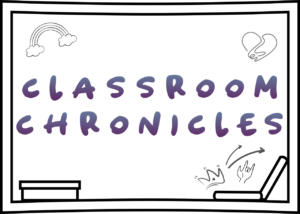In the vast landscape of education, the voices of students often remain unheard. Their perspectives, experiences, and insights are essential in shaping effective educational practices and policies. By delving into the rich tapestry of student perspectives, we gain invaluable knowledge that can transform the educational landscape for the better. In this article, we embark on a scholarly exploration of student perspectives, unveiling their diverse insights and shedding light on the challenges they face. Join us as we discover the untold stories of students and unlock the power of their voices.
Understanding the Importance of Student Perspectives
Student perspectives are not merely incidental anecdotes; they carry profound significance in educational research and policy-making. To truly understand the needs and aspirations of students, it is crucial to consider their unique viewpoints. By incorporating student perspectives into research and policy formulation, we create a more inclusive and student-centered education system. The experiences and insights shared by students have the potential to reshape teaching methodologies, curriculum design, and support systems, ultimately fostering a conducive environment for learning and growth.
Methodology: Unveiling Student Perspectives
Unveiling the rich tapestry of student perspectives requires a comprehensive research approach. Scholars and educators have employed diverse methodologies to capture the essence of student experiences. Through qualitative interviews, surveys, focus groups, and ethnographic studies, researchers gain access to the multifaceted world of students’ thoughts, emotions, and challenges. By employing a wide range of data collection methods and ensuring a diverse sample size, researchers can paint a comprehensive picture of student perspectives.
The Diversity of Student Perspectives
Students are not a monolithic entity; they encompass a diverse array of backgrounds, cultures, and experiences. Acknowledging and embracing this diversity is crucial in creating an inclusive educational environment. Cultural background, socioeconomic status, and personal experiences are just a few factors that shape students’ perspectives. By examining case studies and testimonials, we gain insights into the unique challenges and triumphs of students from various backgrounds. By valuing diversity and incorporating multiple perspectives, we pave the way for equitable education that caters to the needs of all students.
Student Perspectives on Learning and Teaching
Who better to provide insights on effective teaching methods than the recipients of education themselves? Students’ perspectives on learning and teaching offer valuable guidance to educators and policymakers. By understanding students’ preferred learning styles, classroom dynamics, and engagement strategies, we can foster environments that optimize learning outcomes. Bridging the gap between student expectations and the realities they encounter is crucial in creating a harmonious and productive educational experience. By listening to students’ voices, we can co-create an education system that empowers and motivates learners.
Student Perspectives on Educational Challenges
Education is not without its challenges, and students are at the forefront of overcoming them. By examining the common challenges faced by students, we gain insights into their daily struggles and can work towards providing effective solutions. External factors, such as socioeconomic status and mental health, often influence students’ perspectives and experiences. By understanding these influences, we can develop targeted interventions to support students in their educational journey. The voices of students shed light on areas that require attention, allowing us to address these challenges more effectively.
Takeaway
Student perspectives are a treasure trove of untapped potential, waiting to be discovered and utilized. In this scholarly exploration, we have witnessed the importance of incorporating student voices into the educational discourse. By embracing the diversity of student perspectives, understanding their insights on learning and teaching, and acknowledging the challenges they face, we pave the way for a more student-centered education system. Let us commit to fostering an inclusive environment where students’ voices are not only heard but also valued and acted upon. By integrating student perspectives into educational research, policy-making, and classroom practices, we unlock the true potential of education—a transformative force that empowers students and shapes a brighter future for all.

